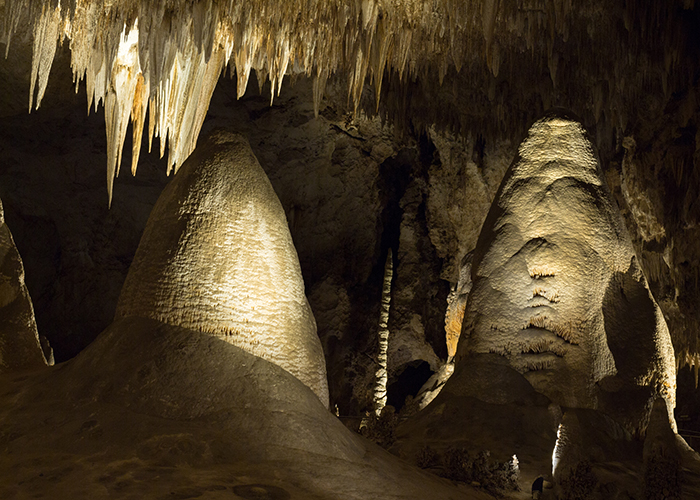 Previous Day |
Whites City, NM → Roswell, NM 96.1 mi (154.7 km) |
 Next Day |
I’m feeling pretty sunbaked after yesterday’s summit of Guadalupe Peak, so today, I’m going to spend some time away from the sun. Such a quest will take me deep into the Earth’s crust, about a mile down, into the core of Carlsbad Caverns National Park!
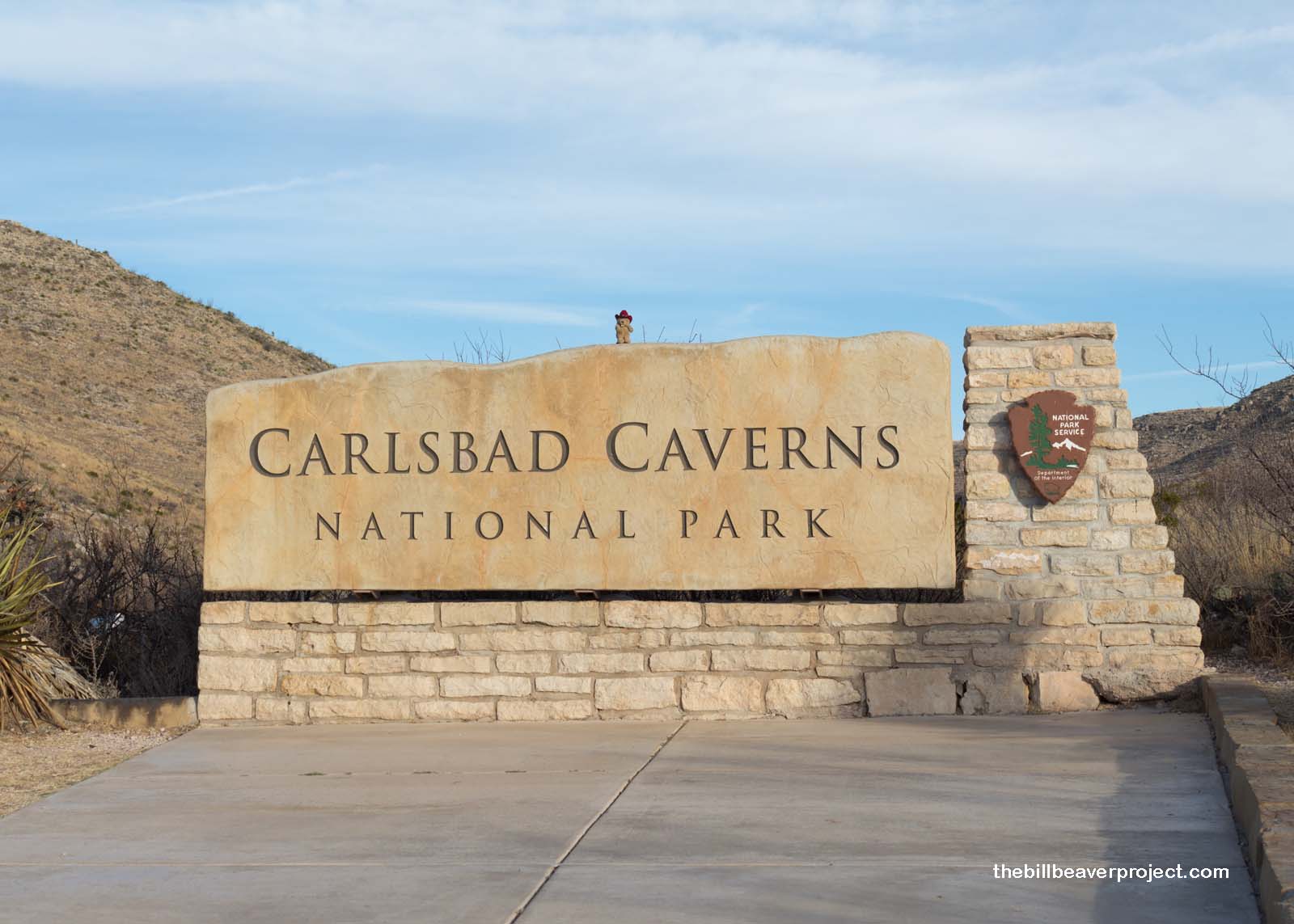 |
I arrived at the visitor center wondering who Carl was, why folks thought he was bad, and why they would name a cave after Bad Carl. Well, it turns out that there was no Carl, at least not in the cave founding sense. The nearby town of Carlsbad was originally named Eddy for rancher, Charles B. Eddy, but after the discovery of some fabulous mineral springs nearby, the locals voted to change the town name to be more like the Carlsbad spa in the Czech Republic. The name stuck to the cave too.
Names, the ranger explained when the natural entrance opened at 8:30, are the only things that should be stuck to caves. To reiterate the point, she directed the morning group’s attention to the patiently waiting Gum Bucket. Gum ruins cave formations, coins pollute cavern pools, and even the soil from boots can spread white nose syndrome, which is still threatening millions of bats nationwide!
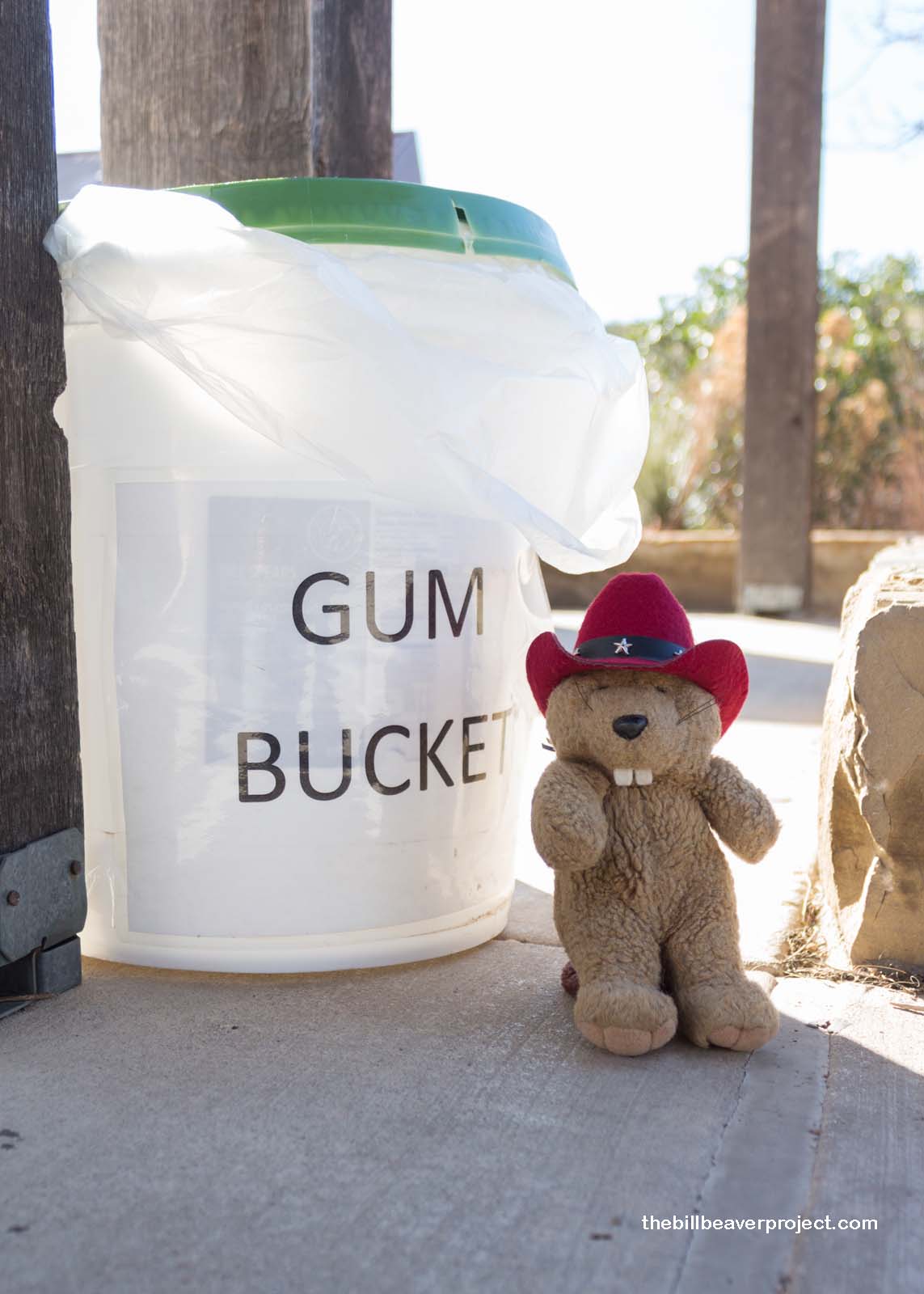 |
The natural entrance gaped like a hungry mouth, gasping in the cool morning air and sucking all the morning visitors toward it. Even at opening, there were a fair number of folks heading down the winding way that reminded me of Walter’s Wiggles, but it was a far cry from peak hours. This park gets over 400,000 visitors a year, which averages to over a thousand per day. That makes it tough to wander this ancient cave in peace and quiet, but there was still plenty of wonder in store below!
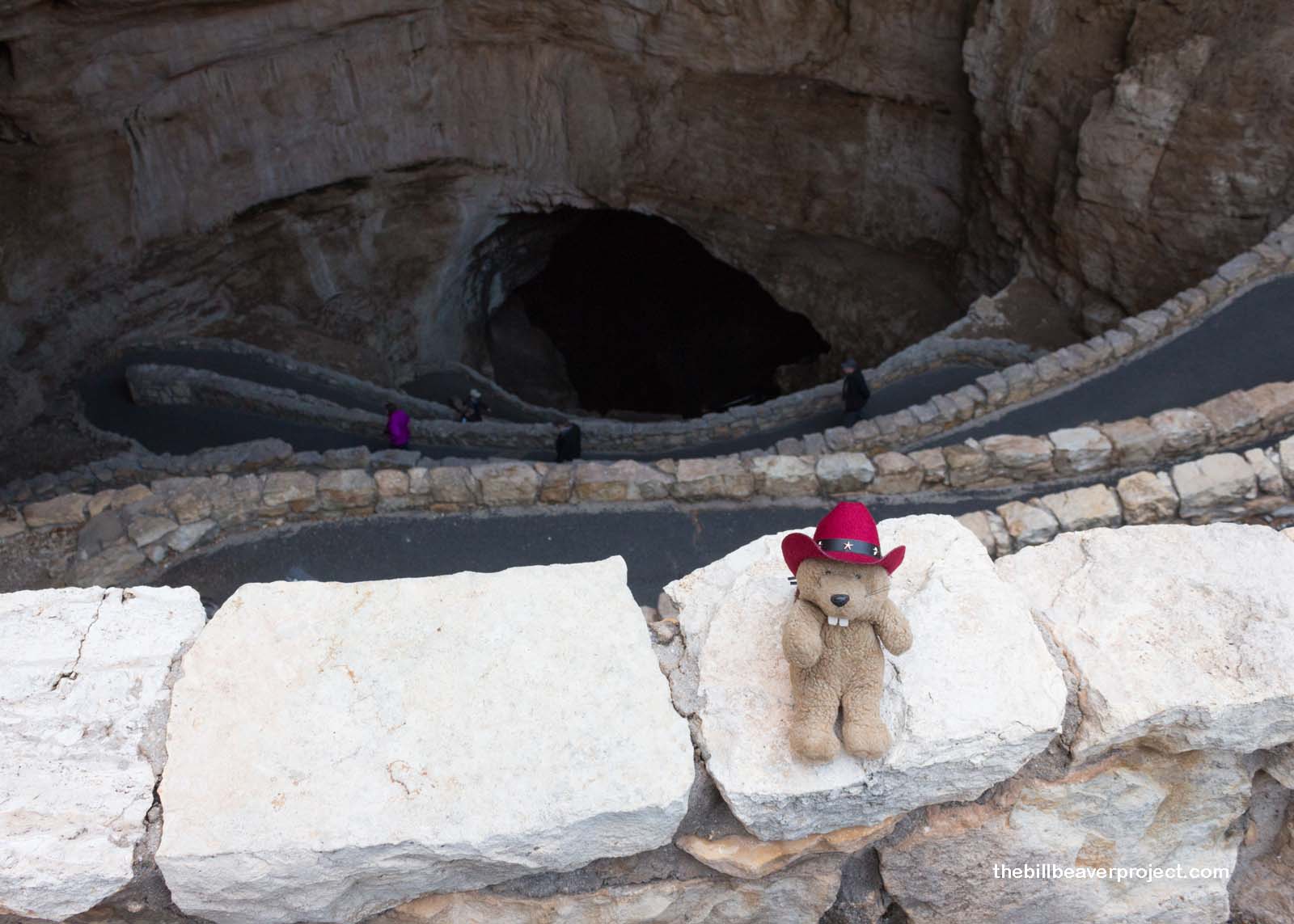 |
Winding down into the darkness, I passed the entrance to the bat cave, home to almost half a million Mexican free-tailed bats, which roost here in the summer time. Both the Mescalero Apache and the Zuni people named this cave for the bats that lived here, and visitors can watch thousands of them erupt on summer nights to feed upon tons of mosquitoes and other bugs. Bats are super valuable to the ecosystem and the economy and deserve our protection!
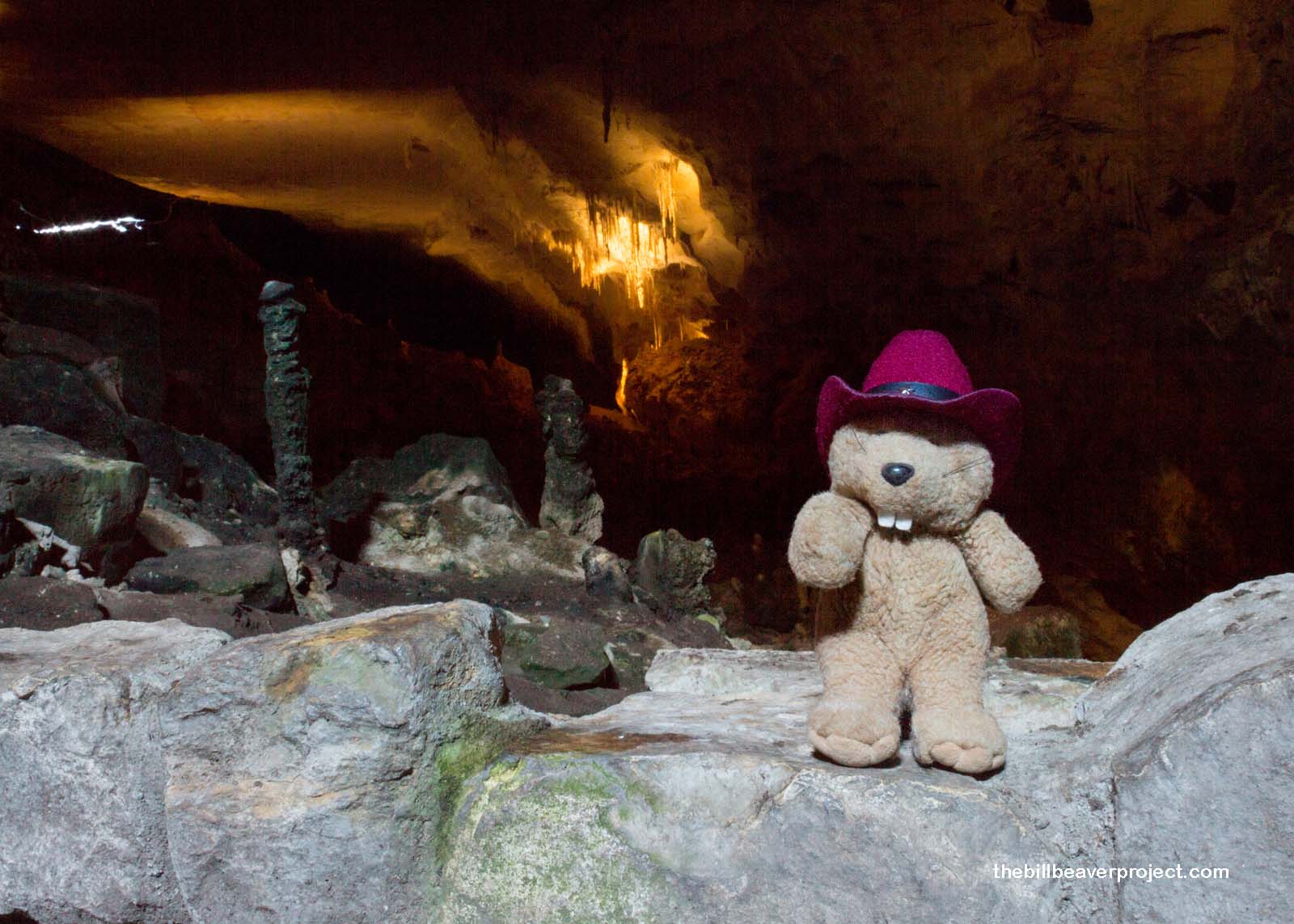 |
It was bats, after all, that led 16-year old cowboy, Jim White, to investigate this cave for the first time in 1898, following what he thought was smoke but what turned out to be bats! Using a handmade ladder, he swung down into the dark, illuminating formations that spooked him enough to name them the Devil’s Den, the Devil’s Armchair, and the Devil’s Spring. This third diabolic cave feature still reflects the stalactites overhead, having been cleared of coins and food waste by the National Park Service!
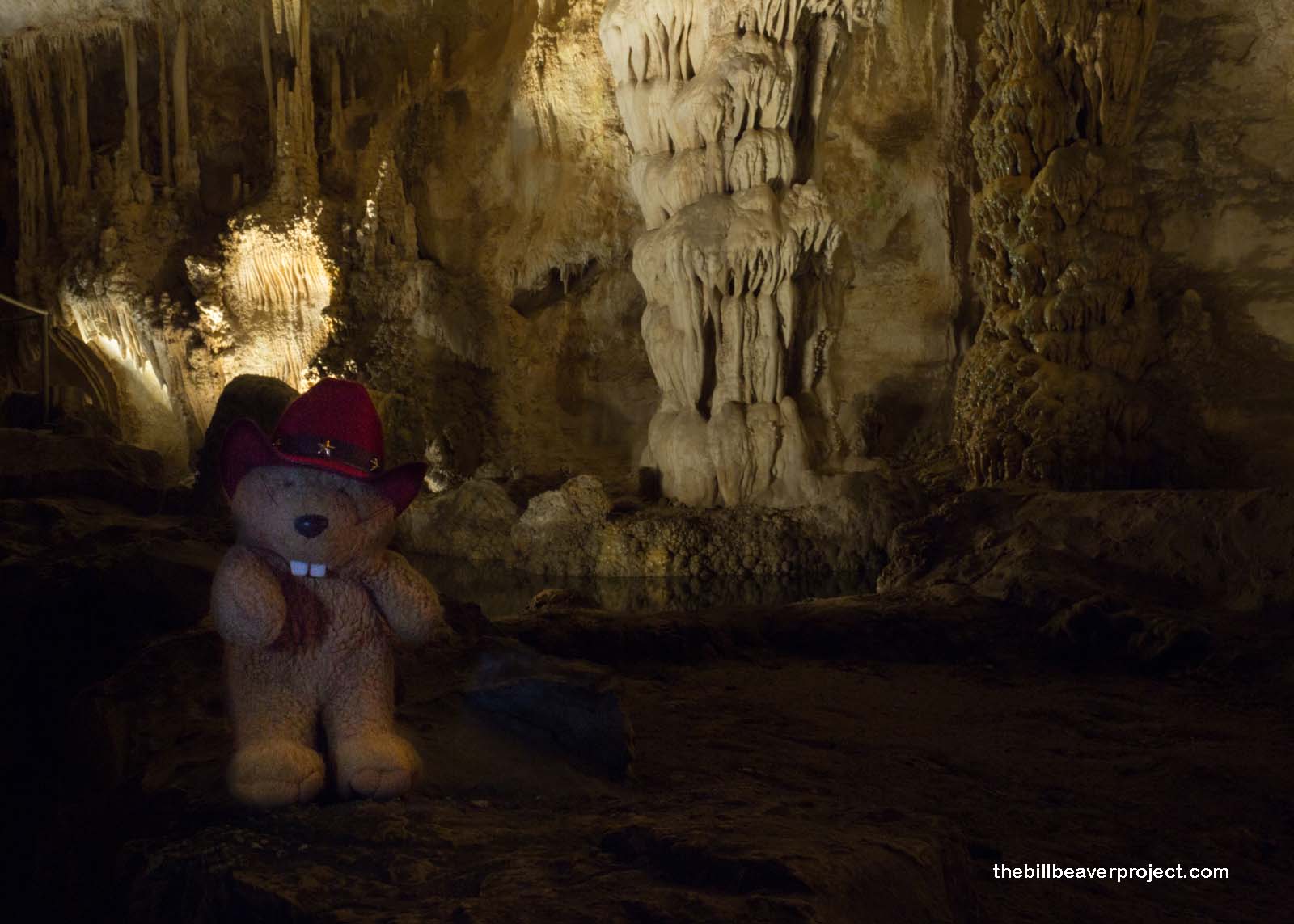 |
The path continued downward, one and a quarter miles into the dark depths, over 750 feet underground! It was steep enough to be tiring, but not nearly as tiring as it could have been hiking up, as some folks do! Somewhere off in the distance, a lone baby narrated the final descent with its cries as I passed the formations called Whale’s Mouth, Iceberg Rock, and the Boneyard, stepping at last into…
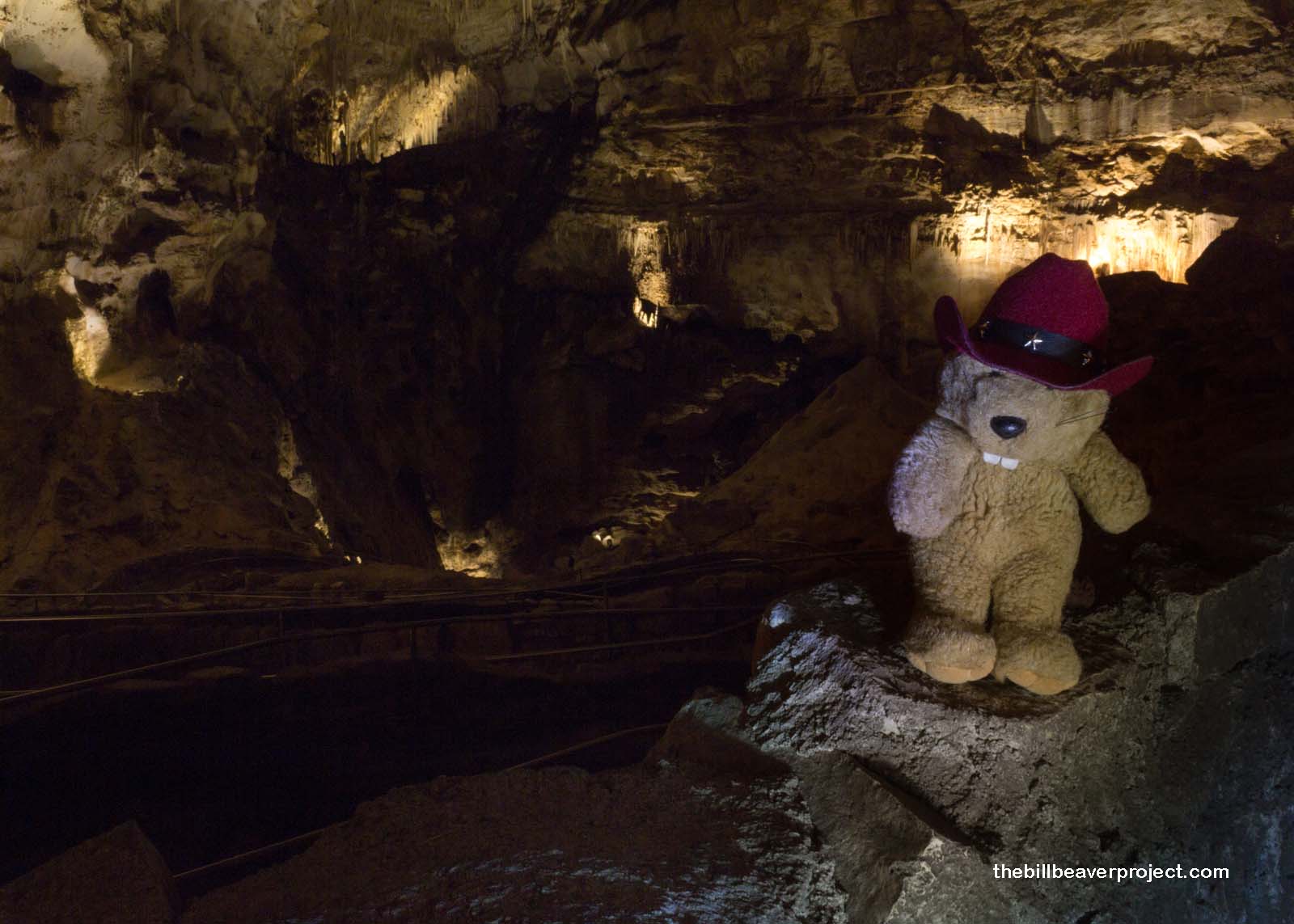 |
The Big Room! I’d reached the junction of the natural entrance trail and the path to the elevators. To my right, a thin walkway wound off into a vast chamber of colossal cave formations, collectively known as speleothems!
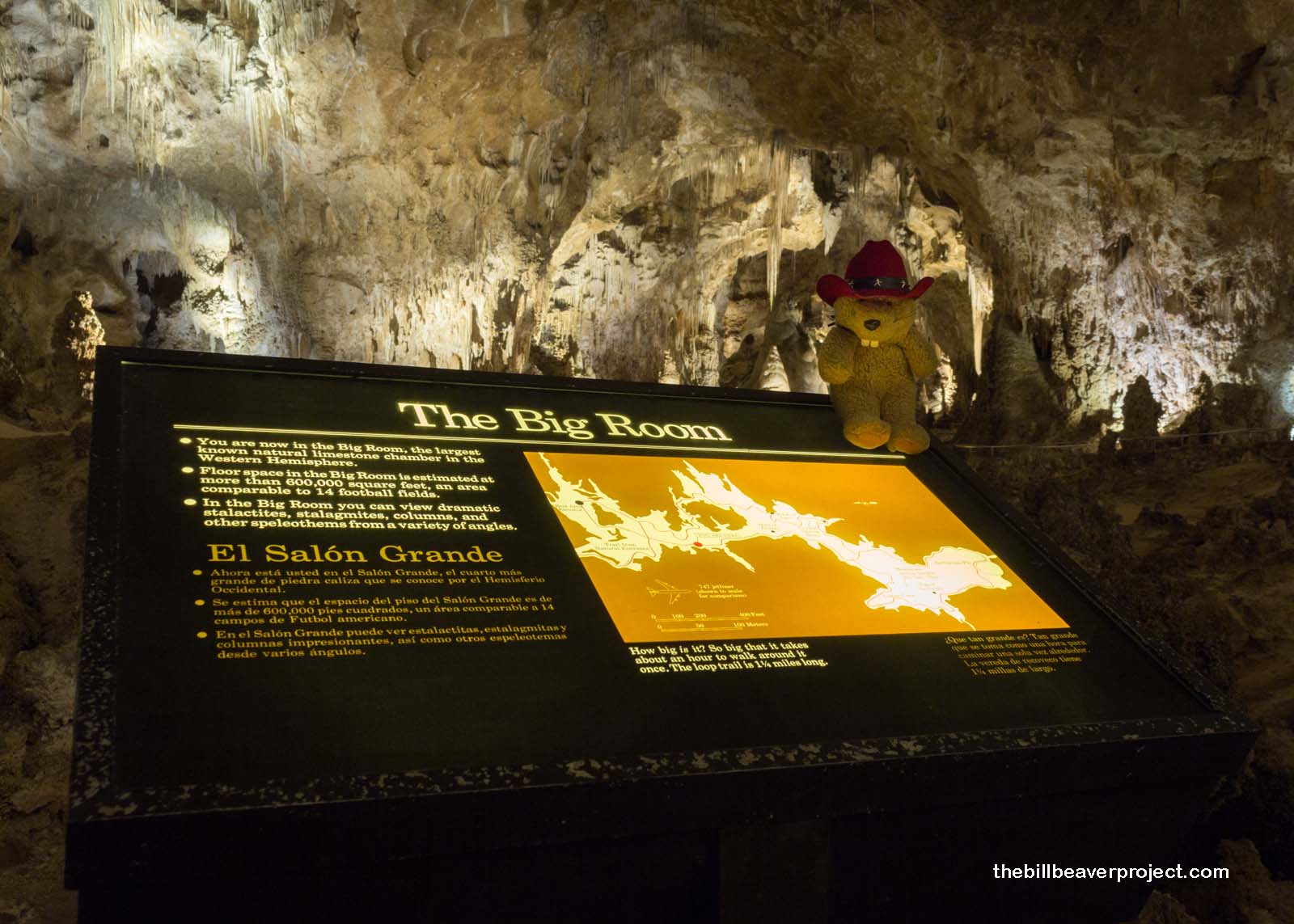 |
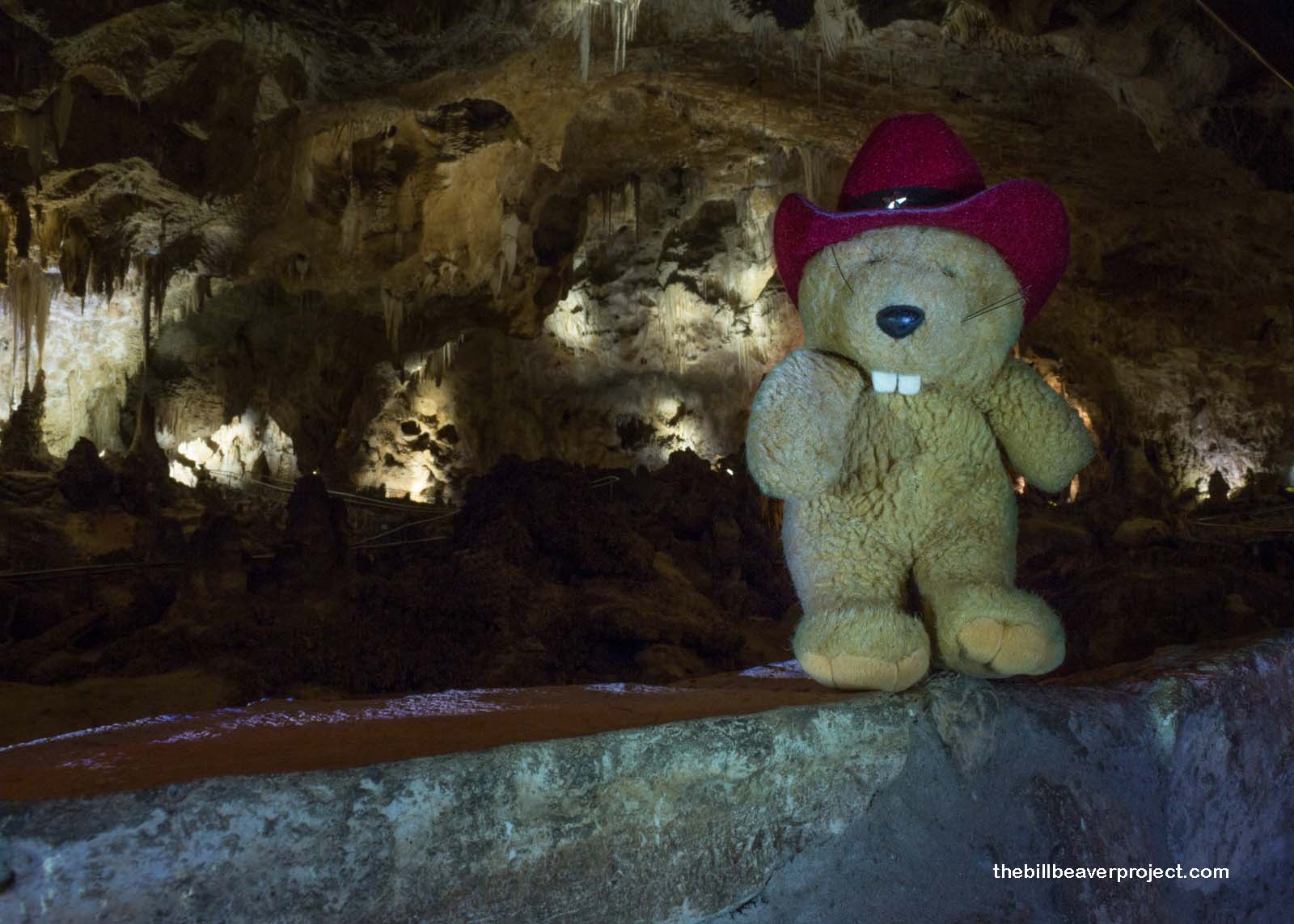 |
The speleothems down here were enormous! I passed through the appropriately named Hall of Giants and marveled at the size and intricacy of the Twin Dome stalagmites! The amount of time it must have taken to form these wondrous 62-foot pillars boggles the mind!
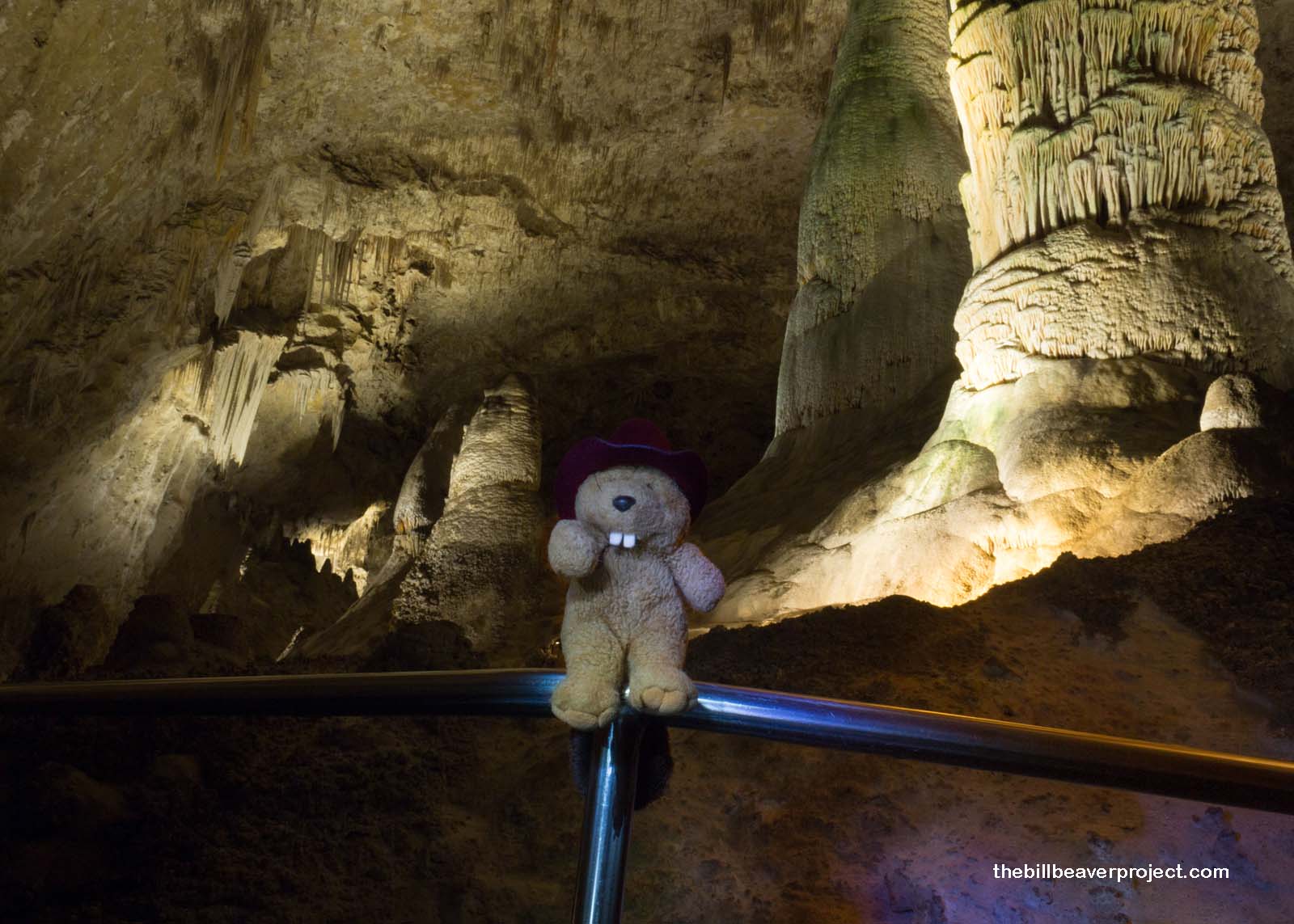 |
Past the hall of giants, the room opened up into a dazzling display of fancy! There were towering stalagmites that reminded me a whole lot of Angkor Wat! The fiercely jagged chandelier of stalactites overhead was dangerous and ominous all at once! Sprinkling the ground between them, clumps of popcorn-shaped formations formed a magical “Fairyland” around them!
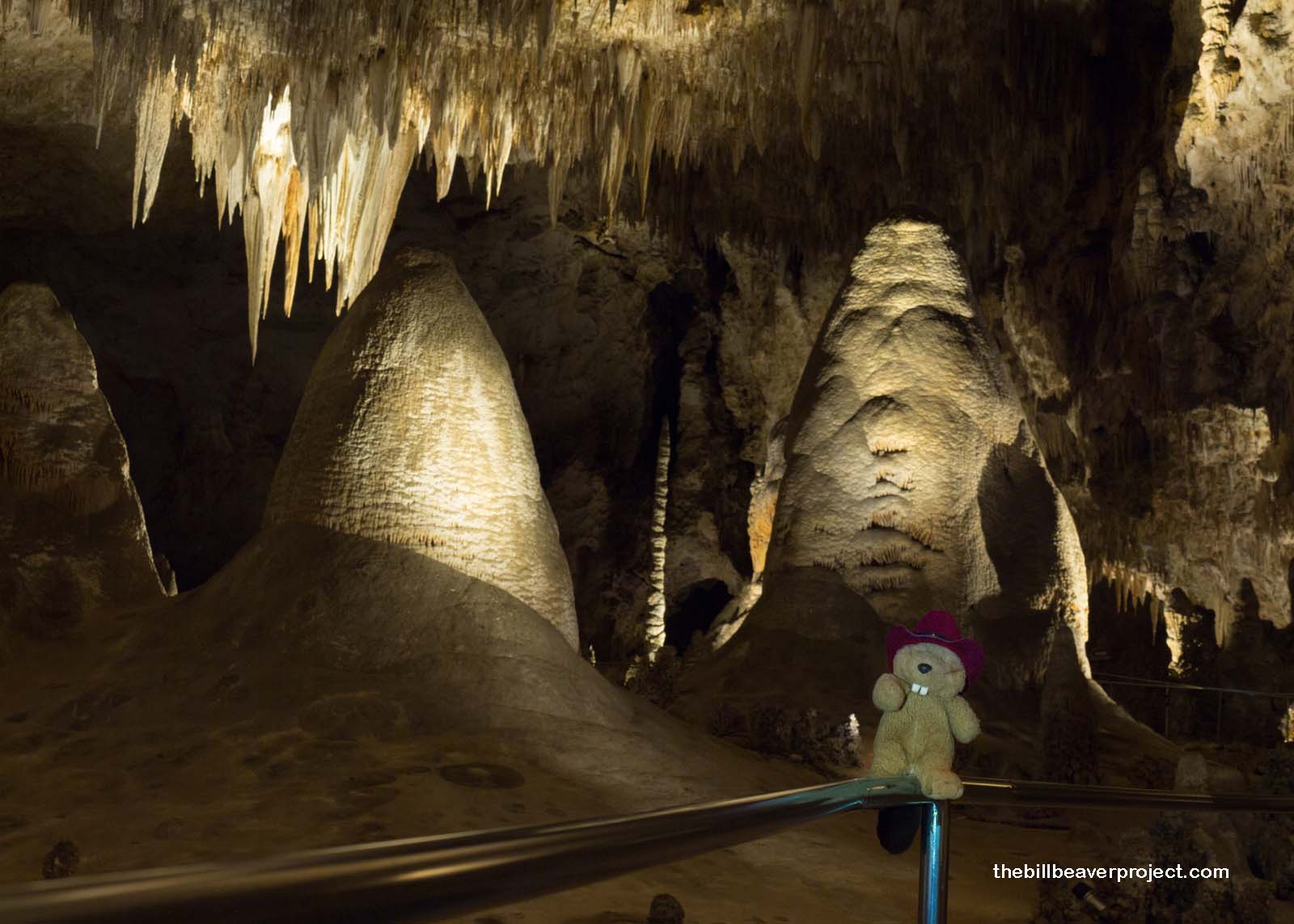 |
I wandered all the way to the apex of the path, the so-called Top of the Cross, mirroring the Big Room’s approximate shape. It was past where private tours can go deeper into the Lower Cave, past the so-called Bottomless Pit, which was so deep that I didn’t dare take photos close to it. Despite being so heavily visited, this cave still has so many mysteries in its depths!
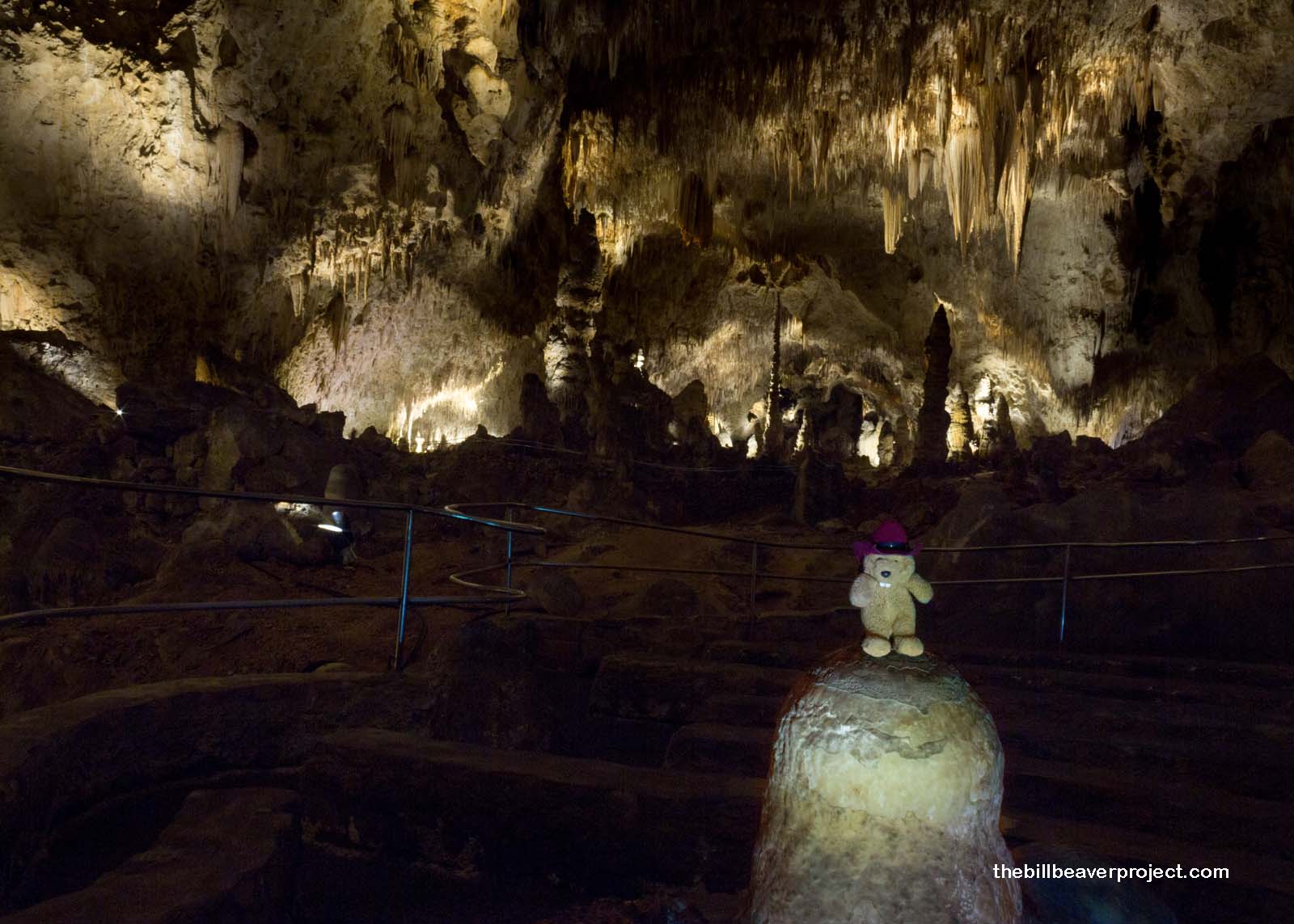 |
That was a good thing too, because the parts where people had visited definitely showed signs. Even the best-meaning folks have had an impact on this cave. A ranger showed me where algae was starting to grow because the display lights gave off just enough UV to make it possible. They’re thinking of making the lights more orange in the future to stave off this growth. Further down the path, a group of volunteers furiously scrubbed the cave popcorn and scooped the water out of pools, where asphalt debris had settled after the construction of the walkway. It takes a lot of work to keep a massive cave in tip-top shape!
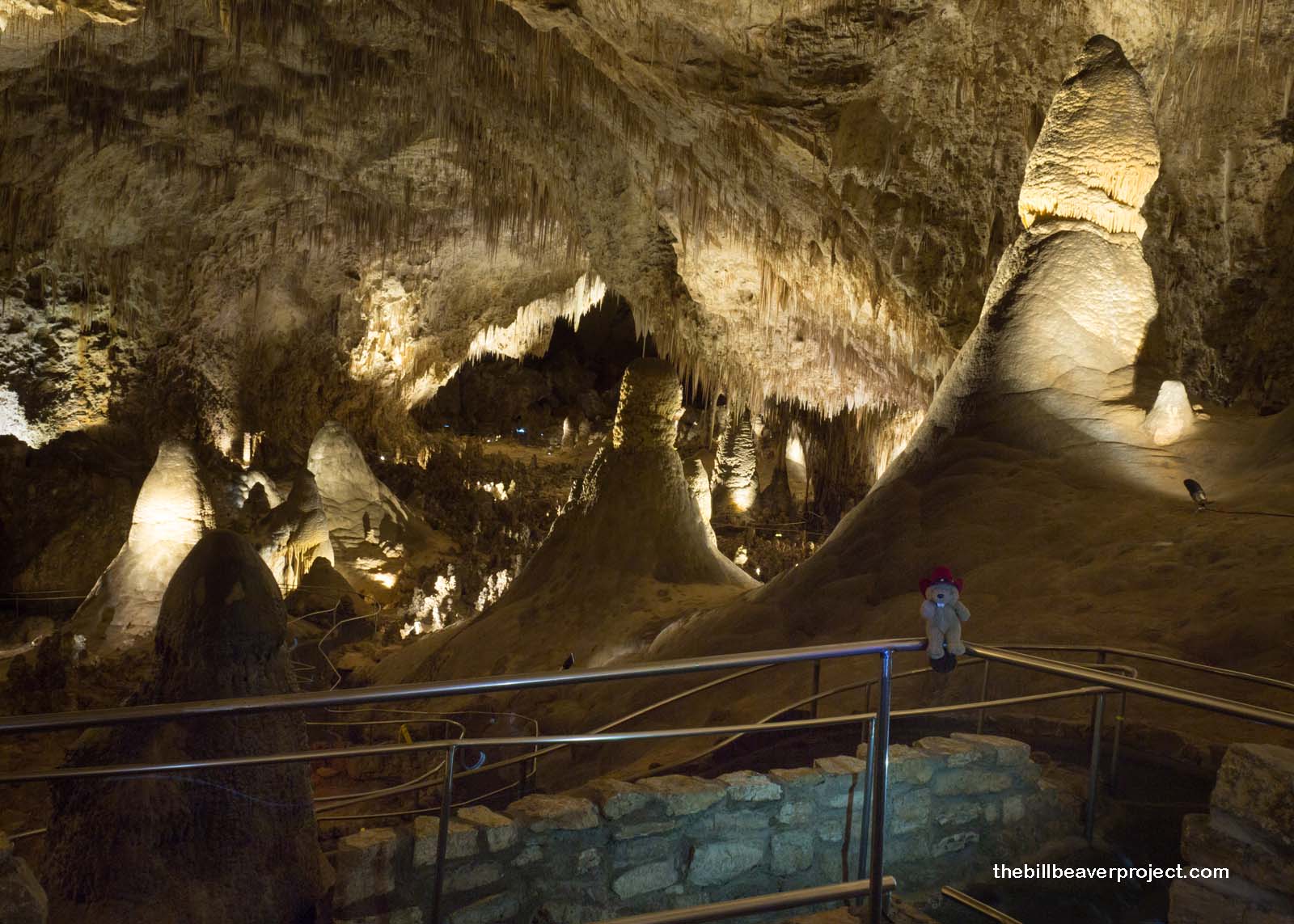 |
After completing the circuit, I returned to the surface via elevator, munching on a veggie burger and reflecting on the amazing structures I’d seen, the time it took to create them, and as the midday crowds started to pour in, how much work it would take to keep them healthy. I wondered what new mysteries would one day be uncovered within this cave or one of the over 100 other, less popular, caves that make up Carlsbad Caverns National Park. It’s that unknown element that makes caves like this so exciting!
Adjusting my eyes!

 Previous Day |
Total Ground Covered: 245.1 mi (394.5 km) |
 Next Day |
